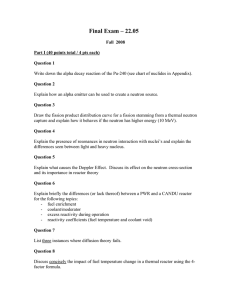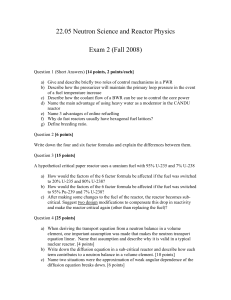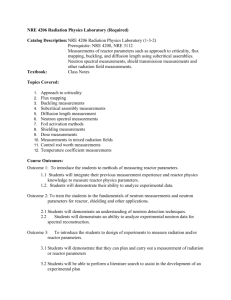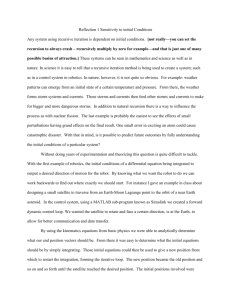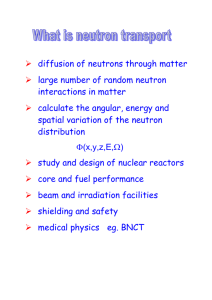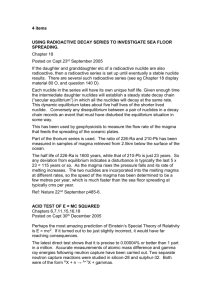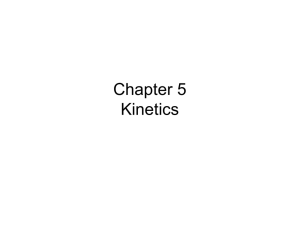henry
advertisement
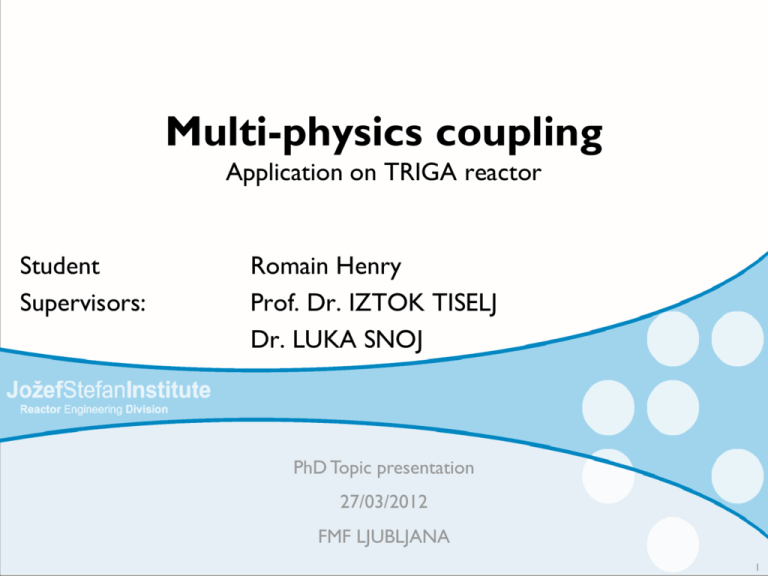
Multi-physics coupling Application on TRIGA reactor Student Supervisors: Romain Henry Prof. Dr. IZTOK TISELJ Dr. LUKA SNOJ PhD Topic presentation 27/03/2012 FMF LJUBLJANA 1 A nuclear reactor is a “boiler” in which heat is produced the fission of some nuclei of atoms having high atomic mass 2 fission products radioactive 2 to 3 prompt neutrons High energy photons The reaction is exo-energetic (~ 200 MeV) 1 fission produce 10^8 times more energy that burning one atom of carbon delayed neutrons are emitted a chain reaction is possible 3 Thermal reactor: PWR,BWR Fast reactor: SFR,LFR,GFR 4 Pool reactor thermal spectrum Water cooled Pmax=250 kW 5 The multiplication factor k describes the evolution of the neutron density between 2 generations k<1: The neutron density decreases The power decreases The reactor is sub-critical k=1: The neutron density is constant The reactor is critical k>1: The neutron density increases The power increases The reactor is super-critical ni 1 k ni 6 Interaction neutron matter : Notion of cross section (expressed in barns) Absorption (fission, capture), scattering Total cross section: interaction probability : t a Pi s i t macroscopic cross section for a given material (atoms density N): N 7 Natural U: 99.3% of U238 +0.7% of U235 Fuel Enriched in U235 8 Moderator: ◦ Very low atomic mass, optimal for the slowing down process ◦ Very low cross section for capture in the thermal range of energy ◦ high concentration of nuclei to favor the probability of neutron scattering Water 9 Transport equation : n(r , v , t ) v .n(r , v , t ) v (r , v )n(r , v , t ) d 3v 'v ' s (r , v ' v )n(r , v ' , t ) s (r , v , t ) t Core modeling geometry (2D, 3D), isotopic composition (fuel, moderator, …) 10 Flow phenomena for the coolant (turbulence ,heat transfer ) Phenomena of importance in the evaluation of fuel integrity. CFD is a branch of fluid mechanics that uses numerical methods and algorithms to solve Navier-Stokes system 11 Navier-Stokes system for incompressible flow with constant Newtonian properties: ◦ Continuity equation ◦ Momentum equation .u 0 u 1 .(u u ) 2 u P t T .(Tu ) 2T t ◦ Energy equation u Fluid velocity Thermal diffusivity c p mc p dT fuel dt Pfission h(T fuel Tcoolant ) 12 Example of CFD result 13 The main goal : describe some behaviors that pure neutron transport equation or pure thermal-hydraulic models are unable to do Research in neutron physics and nuclear thermal-hydraulics require long computational time on large parallel computer Coupled models cannot rely on the most accurate and advanced models from both disciplines(simpler models that allow performing simulations in a reasonable time) 14 Tfuel, Tmod … ThermalHydraulics Neutronics Power distribution … 15 Build a neutronic core model accurate Full 3D description 3D single phase flow description phenomena 2 codes working as 1 16 Validation of the model through measurement with TRIGA reactor: Detectors devices allowing to measure neutron flux for different configurations of the TRIGA core to deduce the power distribution The temperature of the moderator is also easily accessible, with thermocouple, from the reactor pool 17 Temperature reactivity Number of neutron 18 Reactivity ρ= (k-1)/k Temperature increases 0 Absorption increases -1 0 -2 20 40 60 80 100 T(°C) 120 Δρ/ΔT(pcm/°C) -3 -4 Reactivity decreases -5 -6 measurement -7 -8 -9 -10 19 Point kinetic (Boltzmann with no space dependence) dn n i Ci dt l i C precursor λ decay constant l Neutron lifetime in critical reactor β proportion of delayed neutron Thermodynamic law mc p dCi i n i Ci dt l dT fuel dt Pfission(n) (T fuel Tcoolant ) 20 Temperature Δρ/ΔT reactivity Pfission Point kinetic Number of neutron 21 Build a full 3D model of the TRIGA reactor Simpler geometry Data easily available See which application we can have for a power reactor 22 Thank you for your attention 23

